Today’s Farm ’s
SPRING 2023
Grasshopper plagues, sod house part of Sandager history on 150-year family farm
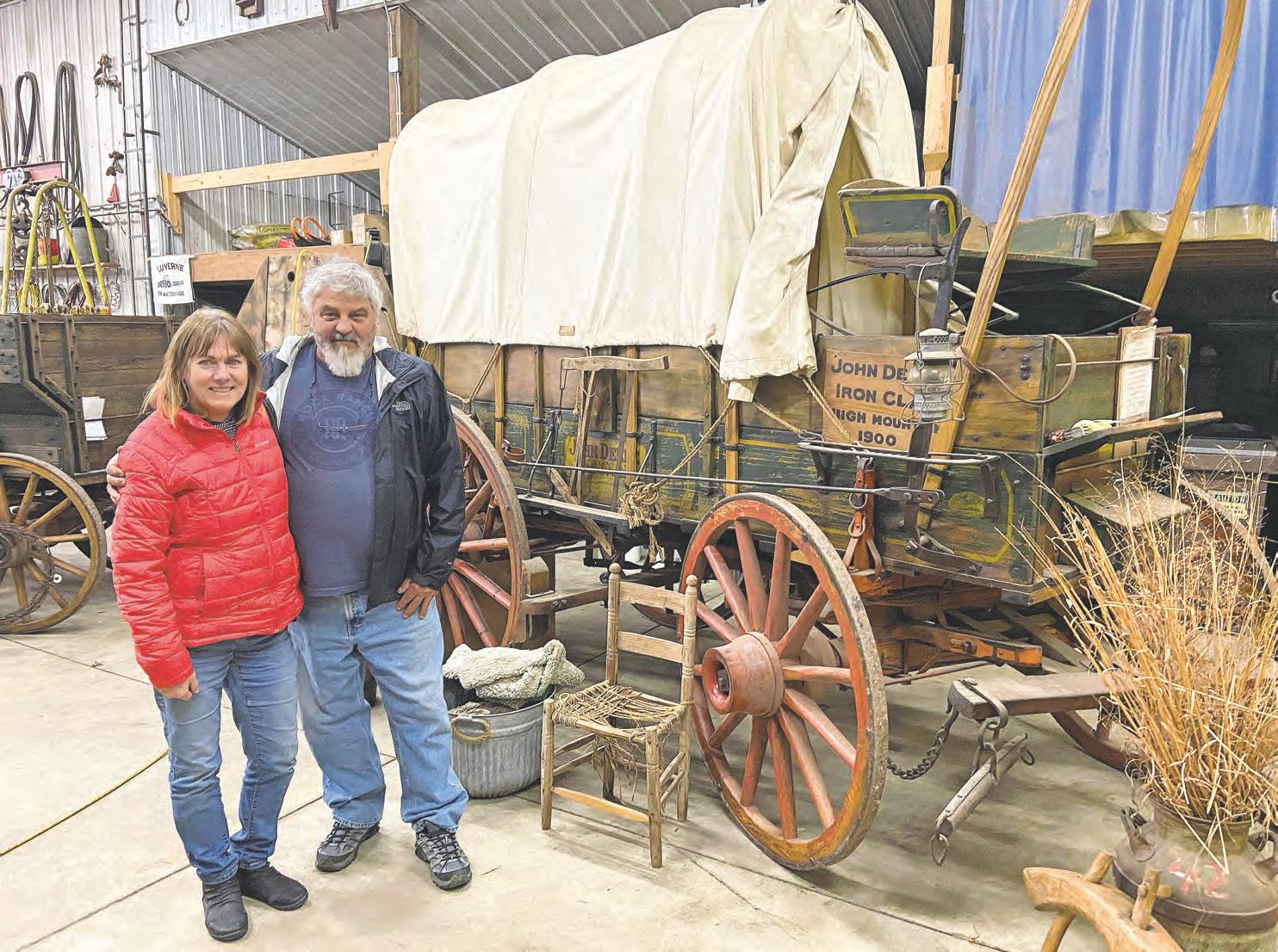 BY JULIE BUNTJER
BY JULIE BUNTJER
The Globe HILLS — Gene “Pucky” Sandager of rural Hills is a history buff, not just regarding his own family’s 150year history on their newly designated Sesquicentennial Farm, but of the history that abounds in southern Rock County.
He’s hosted several groups of students to the
Sandager farm in the southeast quarter of Section 19, Martin Township, as he shares the story of his great-great-grandparents, Simon and Ann Skovgaard, making their way from Heils, Denmark, to southwest Minnesota.
The Skovgaards staked a claim on a quarter section of land in 1873, just west of Hills — although Hills was
non-existent at the time.
Simon was born in 1835 — a commoner in Denmark — who fell in love with a noble-blooded young woman, Ann.
“Ann’s parents were furious and said no, she wasn’t going to marry that common boy,” Sandager shared. “Love won over, trumped the parents and they got married.”
The marriage fractured her relationship with her family, but she and Simon made a family of their own when son Charles Frederick Skovgaard was born. They remained in Denmark and, in 1864, Simon was sent off to fight with the German-Danish soldiers in the Prussian War.
SANDAGER : Page 16
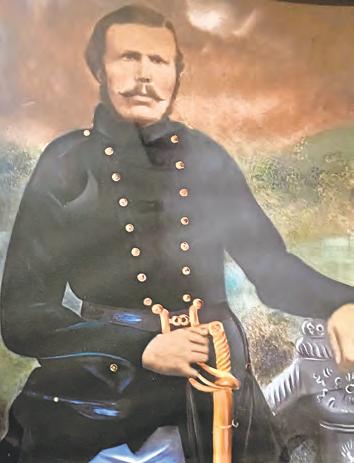 Julie Buntjer/The Globe Shirley and Eugene “Pucky” Sandager stand in front of a covered wagon that is reminiscent of the wagon his ancestors used to travel from Cedar Falls, Iowa, to the unbroken prairie in southern Rock County near what is now the town of Hills.
Photo courtesy of Eugene Sandager Simon Skovgaard
Julie Buntjer/The Globe Shirley and Eugene “Pucky” Sandager stand in front of a covered wagon that is reminiscent of the wagon his ancestors used to travel from Cedar Falls, Iowa, to the unbroken prairie in southern Rock County near what is now the town of Hills.
Photo courtesy of Eugene Sandager Simon Skovgaard
State recognizes area sesquicentennial, century farm families
BY JULIE BUNTJER
The Globe
EAGAN — The Minnesota State Fair and the Minnesota Farm Bureau are recognizing 89 Minnesota farms as Century Farms, and the Minnesota Farm Bureau Federation is recognizing 43 honorees of Sesquicentennial Farm awards in 2023.

To qualify as a Sesquicentennial Farm, the farm must be in continuous family ownership for at least 150 years, be 50 acres or larger, and currently be involved in agricultural production.


Century Farm awards are presented to farms that have been in continuous family ownership for at least 100 years and are 50 acres or more.
Sesquicentennial farm families will receive a commemorative certificate signed by Gov. Tim Walz, Minnesota Department of Agriculture Commissioner Thom Petersen and MFBF President Dan Glessing,
along with an outdoor sign signifying Sesquicentennial Farm recognition. Century Farm honorees receive a commemorative sign, as well as a certificate signed by Minnesota State Fair and Minnesota Farm Bureau presidents and Gov. Walz. In addition to the area farms featured in The Globe’s special Today’s Farm edition, the following also are being recognized as Century Farm honorees in 2023:
► The Koopmann Farm in rural Fulda, Murray County, is currently owned by Jean Guyse, Rochester. The farm was originally purchased by Henry Koopmann in 1898, and transferred to his son, Jacob Koopmann, 15 years later. Jacob owned the farm for 60 years, and then it went to Jacob’s daughter, Mabel Koopmann Meier, for three years. Jean Meier Guyse, daughter of Mabel, has owned the farm for 47 years. Jean said the 80-acre farm was purchased from
the Sioux City and St. Paul Railroad Company for $15 per acre. Henry Koopmann had emigrated from Vormstegen, Germany, and worked on the railroad while creating a home for his family on the plot of land. Today, the farm produces corn and soybeans.
► Barbara Ann Everson, Wichita, Kansas, is the owner of a newly-designated Century Farm in Section 27 of Graham Lake Township, Nobles County. She is the granddaughter of John E. and Anna A. Johnson, who purchased the farm in 1915. It currently consists of 153.7 acres. John owned
the farm for 10 years, with Anna taking ownership at the time of his death. She continued the farm for 31 years before it was taken over by their son, Leonard S. Johnson. He owned the parcel for 23 years and, upon his death, his widow, Hilda M. Johnson, and daughter, Barbara A. Everson became the farm’s owner. Barbara has owned the land on her own for the past 23 years.
► Donald and Janet Sieve, Wilmont, own a 154acre parcel in Section 7 of Summit Lake Township, Nobles County, that has been in the Sieve family
since 1909. They applied for Century Farm status this year for what has always been dubbed the Sieve bare quarter, as it’s always been strictly farmland. Donald’s grandfather, August Sieve, originally purchased the parcel and, upon his death, it was owned by August’s wife, Caroline. Their son, Henry, eventually became the farm’s owner, and owned it for 35 years before his son, Donald, gained ownership. Donald and Janet have owned the land for the past 43 years.
► Jesse Feeken, Rushmore, currently farms the Reiter and Feeken family farm in Section 18 of Ransom Township, Nobles County, that is newly listed as a Minnesota Century Farm. The 160-acre parcel was purchased by Reint Reiter in 1923 for a mere $50 per acre. Reint had emigrated from Germany to pursue his dream of farming, and he remained owner of the quarter
section for 18 years. His daughter, Florence Feeken, and her husband, Elmer, were the farm’s next owners. They maintained ownership for 29 years before ownership transferred to their daughter, Grace Feltman. Grace has been the owner for the past 53 years. Today, the farm produces corn, soybeans and cattle.
► Gary and Elizabeth Erdmann, Balaton, are the owners of a newly designated Century Farm in Section 22 of Springwater Township, Rock County. The 160-acre parcel was originally purchased by Gary’s grandfather in 1922 through a foreclosure sale. Over the years, the farm has produced corn, oats, hay, hogs, cattle and horses. The original home was taken down in 2021 and what remained of the 5-acre building site was sold. Today, there are no buildings left to indicate there was a homestead there.
2 | WEDNESDAY, MAY 31, 2023 TODAY’S FARM SEE MNSP FOR ALL YOUR SOYBEAN PRODUCT NEEDS.. Call 1-888-842-6677 or visit us on the web at MnSoy.com Minnesota Soybean Processors
Stock photo by Gozha Net on Unsplash
Four generations of rock pickers tend to family-owned land for 150 years
Christophersons recognized for Sesquicentennial Farm
BY JANE TURPIN MOORE
The Globe WORTHINGTON — In southwest Minnesota, marking the 150th year of continuous family farm ownership is indeed notable.

But experiences in Germany and associations with Worthington’s sister city of Crailsheim provided a broader perspective on that milestone to Dean and Carol Christopherson, owners of a Bigelow Township acreage that originated with Dean’s great-grandfather Olaf Nystrom in 1871.
The Christophersons are annually reminded that they, and three preceding generations of Dean’s ancestors, have been picking rocks on the same soil since 1871.

“We’ve been blessed with rocks,” Dean said wryly. “The rocks were always
there, and they keep coming.”
The Christophersons, married on Nov. 4, 1972, were additionally blessed with five daughters, born between 1974 and 1984. Each daughter reigned as Nobles County Dairy Princess at different points and three of the Christopherson girls modeled for butter-head sculptures as Princess Kay of the Milky Way finalists at the Minnesota State Fair.
“Those same three were also Crailsheim exchange students,” said Carol, explaining their family has grown to include five sons-in-law and 12 grandchildren.
Family heritage
That expansive family is a far cry from Dean’s upbringing as the only child of Burton and Marian Christopherson.
“I shared the farming
with my father before we married,” said Dean, a 1966 Worthington High School graduate. “He retired from the dairy after just a few
years, and then it was all ours. He eventually retired from farming, and my parents used to enjoy going to Arizona during the winter.”
For her part, Carol knew something about farms growing up, since her dad kept a few cows and chickens — and for
a while, that knowledge made her wish for a life outside of agriculture.
Comingincontactwith overheadpowerlinescanbedeadly.Today’s farmmachiner yisbiggerandtaller,making thedangerofworkingaroundelectriclinesgreaterthanever.Springcanbethemostdangeroustimeofall.

Makesureallfamilymembersunderstandthese
•Utilitylinesareuninsulated.Don’t let yourbodybecome adirectlinktothe groundorthe resultcouldbefatal.
•Knowthe clearanceheightofallfarmequipment. To besafe,keepallobjects atleast10feetawayfrom overheadlines.


•NEVERattempttoraiseormove apowerline. Ifyou’re operatingequipment thattouches aline,staywhereyouareandhavesomeonecalltheutility.
•Ifyoumustleavetheequipment,jumpasfaras youcansothatnopartof yourbodytouchestheequipmentandthegroundatthesametime.
TODAY’S FARM WEDNESDAY, MAY 31, 2023 | 3
POWERLINESAREHOT!
22636USHwy.59-P.O.Box788 Worthington,MN56187-0788 800-776-0517 Website:noblesce.coop •E-mail:nce@noblesce.com HEADSUP
rules: Worthington 1545 N. McMillan 507-372-4250 Adrian 109 E. 7th St. 507-483-2761 Luverne 300 N. Kniss 507-283-4567 Serving your family with dignity, compassion & excellence. dingmannandsons.com
Home & Cremation Services
Funeral
From Earth to Eternity, Uniting Farmers and Funerals. Our compassionate services sow the seeds of remembrance and honor.
Tim Middagh/The Globe
Carol and Dean Christopherson stand in the farm field that was originally purchased by Dean’s greatgrandfather, Olaf Nystrom, in 1871.
CHRISTOPHERSON: Page 4
“I always said I wasn’t going to marry a farmer — but it’s been good,” said Carol.
The couple met by happenstance when Dean, on a roller-skating outing in Windom with his two best high school buddies, asked what was happening the next Saturday night.
“One of them told me his cousin was getting married and invited me to the reception,” said Dean. “And that’s where Carol and I met.”
The former Carol Obermoller graduated from Brewster High School in 1968, after which she completed a yearlong business course at then-Worthington Community College.
“I was lucky and got a job with Judge Vincent Hollaren,” said Carol, referencing the former longtime Nobles County probate and juvenile judge.
“I worked for him for five years until our oldest daughter was born, and then he was retiring and the courthouse was doing a complete administrative overhaul so it seemed like a good time to let somebody else take over.”
Fully embracing farm life by then, Carol helped with milking (they had 100 head of milk cows at the peak of their dairy days) from the mid1970s to mid-’80s, her mother-in-law watching the Christopherson girls while Carol was in the barn.
“Marian played piano and loved music, and as they grew she made them practice piano,” said Carol. “I credit her for their music involvement.”
Dean, too, studied at the former Worthington Community College for two years before pursuing an ag business degree at
the University of Minnesota’s St. Paul campus. The Vietnam War interrupted his academic career.
“I had a low lottery number, so facing either the army or enlisting, I enlisted in the Army Reserve in 1969 and served six years with the 452nd General Supply Company out of Worthington and Winthrop,” said Dean.
Lay of the land
Dean’s great-grandfather, Olof Nystrom, emigrated from Sweden with one of his four brothers (Hans) in early 1870. In Sweden, their last name was Person.
“When the Persons came from Sweden, they changed their last name to Nystrom.” shared Dean.
Their other brothers later followed them to the Lake Ocheda area, also changing their last name to Nystrom, but Olof and Hans displayed considerable pluck and fortitude as they initially made
their way from Quebec to Wisconsin, then Michigan, and eventually to Minnesota.
First working to blast rocks and remove stumps in Duluth, they joined a railroad construction crew in the spring of 1871. Railroad labor led them to St. James, where they heard of government lands available near current-day Worthington.
A Nystrom family historical record points out that when they walked from Jackson to Worthington to explore the land, they found one man living on the south side of Lake Okabena and five Norwegians and one Swede near Lake Ocheda — with nary a bush or tree to break the vista of waving prairie grasses.

Deciding to file a claim, Olof and Hans walked to the land office at Jackson, filing on May 26, 1871.
“They raised hay at first and got horses, and our ancestors spent hours working to build the
railroad before they got this land,” said Dean, marveling at the fact the railroad beds they laid are still in use today.
“What really makes it special is that our
Crop Nutrition Seed

property is on the Indian Lake Township and Bigelow Township dividing line, and these people helped form the Swedish Baptist Church that became Indian Lake Baptist
Church,” he continued. The church’s 50th anniversary booklet contains pictures and names of its founders, including Olof and his wife.
Crop Protection

4 | WEDNESDAY, MAY 31, 2023 TODAY’S FARM
Innvictis
Exclusive to Simplot Grower Solutions, Innvictis products protect a grower’s investment acre by acre, from seed to harvest. Expansive seed portfolio containing today’s top traits and genetics. Innovative fungicide, pesticide and herbicide products formulated to defend against pests and disease. Field-proven nutrition programs and products to keep your fields thriving for generations.
(507) 825-3311 131 Railroad Ave Hatfield, MN 56164 M-F 8am - 5pm simplot.com
Olof and his wife
Photos by Tim Middagh/The Globe
CHRISTOPHERSON
Page 3
This image shows the branch of the Nystrom family tree, beginning with Olof and his siblings.
From
CHRISTOPHERSON: Page 6
Paulson farm turns 150, weathering changes and multiple generations
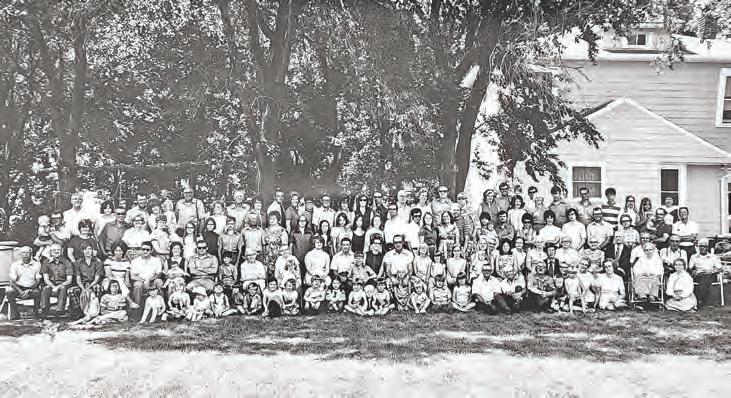 BY KARI LUCIN
BY KARI LUCIN
The Globe WINDOM — Agriculture has changed a lot since Curtis Paulson started farming in 1958, right after he got out of high school.
“Everything is so big,” he said. “Machinery has gotten so big and wide.”
The farms have become larger too, and the machinery is significantly more powerful, perhaps in order to cover so many additional acres during the limited planting and harvest seasons. Old tractors had 44 horsepower; newer ones have 300. Land consolidation has meant many old farmsteads have been torn down, and there are fewer neighbors living in the country.
Some things don’t change much, though.
Changes
The Paulson family has been farming their own 80 acres of land in Section 30 of Jackson County’s Kimball Township since it was homesteaded in 1871 by Jon Paulson. They’ve added land to the corn and soybean operation and moved out of the ancestral home since, but it’s still the Paulson farm.
Curtis and his wife, Myra, hope it’ll continue to be the Paulson farm for a long time into the future, and their son Daniel Paulson, who has owned the farm with Curtis since 2009, hopes so too.

“It beats me why they want to farm so big,” said Curtis, who finds the 650 acres he and Daniel farm now to be quite sufficient. And recently, he’s been stepping back more and more to allow his son to be more in charge of the operation. “It’s not the easiest thing I ever did, retiring.”
He didn’t begin his farming career alone, either, but with his father, Garfield Paulson, who owned the land from 1949 to 1995, and farmed with Curtis and two of his other sons.
“He always used to say we argued too much,” Curtis said of his father. “And we did, we argued… a lot.”
“That was hard farming,” said Dianne McDaniel, of Jackson, Curtis’ sister.

“Now a machine does so much of it,” Curtis agreed, pointing out how much less farmers must rely on their own muscle power to get the work done. It’s safer, too — technology has even advanced to the point where if a farmer stands up on a tractor, the machine will stop by itself.
Curtis still recalls raising cattle and small-grain oats on the land, as well as wheat and flax, crops with very little presence in southwest Minnesota today. Beans, by contrast, didn’t arrive in the area until after World War II, and have since become a staple.
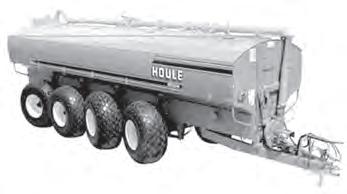
He also recalls some of

his parents’ stories, such as how his father Garfield built a sled in the basement to pull behind a horse so he could drive Curtis’ mother, then a teacher, to school.

McDaniel remembered that as a teacher, her mother did not want her children to “sound like a Norwegian,” but that she didn’t always speak English, either. And she’d loved her year as a teacher, so much so that the family moved the old schoolhouse to the farmstead and used it to store corn, until it was torn down.
PAULSON: Page 8
SPRING TODAY’S FARM WEDNESDAY, MAY 31, 2023 | 5
Luinenburg Waste Management Systems, Inc. Contact us for your confinement operation waste needs. JR 507-360-8839 John 507-360-8838 Justin 507-360-8837 507-372-2141 | www.jessnoble.com | 1244 Oxford Street, Worthington Like a Good Neighbor State Farm is There Jessica Noble Insurance Agency Inc.
Photo courtesy of the Paulson family
The Paulson family gathered to celebrate the Paulson farm’s 100th anniversary and Century Farm status in 1971.
Kari Lucin / The Globe Curtis and Myra Paulson stand in front of their house in rural Windom this spring.
Olof had three children — Myrtle, Alice and Rueben — and Alice is Dean’s grandmother.
“She married a Christopherson,” said Dean.

The original 76.49 acre plot now holding sesquicentennial status passed in ownership from Olof Nystrom to Myrtle (the latter possessed it from 1929-65). Dean’s great-uncle Rueben and his wife Margaret had two children. One of them, Warren Nystrom, was the next landowner from 1965-94. Dean and Carol have been the official owners ever since. The land is mostly rolling prairie.
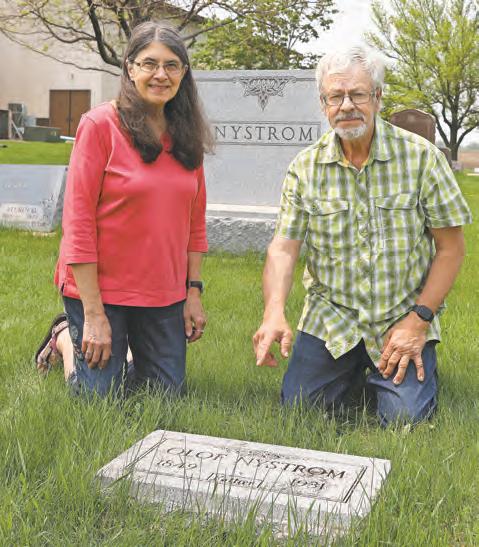
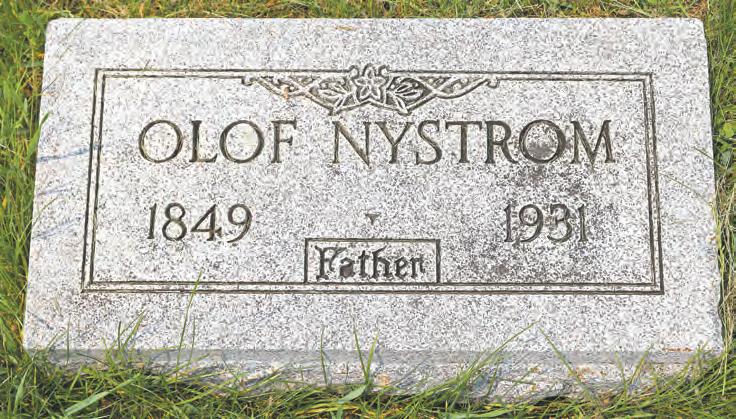
“A lot of the land we farm is hilly,” says Dean, who today continues working nearly 800 acres, having retired from dairy farming in early 2019. Corn and soybeans are the primary crops.
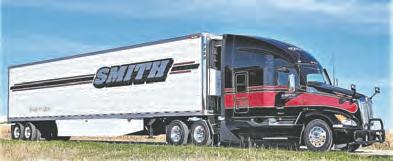
When the Christophersons are not occupied with farming tasks or grandchildren, Dean serves as supervisor of the Bigelow Township Board and as Nobles County Farm Bureau chairman while Carol, an avid gardener, is involved with the Worthington Garden Club. They’ve also been active members of Living Waters Covenant
Church since their marriage.
With their wedding anniversary falling on Nov. 4, they annually strive to be done picking corn by that date each season.
“We’ve made it in all but maybe five years,” said Dean, “and in one of those years, we hadn’t picked a single ear (by Nov. 4) because it was so
wet and rainy we had to wait for the ground to freeze.”
Despite Carol’s teenage vow to never marry a farmer, she’s the first to admit life on the farm turned out quite favorably.
“Our girls had fun with the animals and tractors and developed a great work ethic, and now the grandkids love to visit the


farm and be by us,” said Carol.
One grandson in particular likes driving the skid loader, combine and tractors, and one granddaughter vies to feed the

calves — so perhaps the farm will carry on with a future generation.
Either way, “The farm was a great place to raise our family,” said Carol.
6 | WEDNESDAY, MAY 31, 2023 TODAY’S FARM Family Owned and Operated since 1946 COME DRIVE with THE BEST – FAMILY OWNED AND OPERATED FOR 75 YEARS 507-376-7107 www.smithtruckinginc.com • Highly Competitive Pay and Bonuses • Hiring Long Haul, Short Haul and Regional Drivers • Full and Part Time Drivers Matching 401K, Medical, Dental, Vision, Life, Disability offered
Photos by Tim Middagh/The Globe
CHRISTOPHERSON From Page 4
The headstone for Olof Nystrom shows that he lived to be in his early 80s.
Carol and Dean Christopherson visit the resting place of Olof Nystrom at the Indian Lake Baptist Church cemetery.
Siblings are fourth generation owners of Alberts-Jacobs Century Farm
BY JULIE BUNTJER
The Globe
RUSHMORE — Siblings
Randy Jacobs and Janet Smid are the fourth-generation owners of a 160-acre newly designated Century Farm south of Rushmore.

Their great-grandparents, Albert and Dena Alberts, purchased the northeast quarter of Section 7, Ransom Township, Nobles County, in 1923 from Link and Amelia Prins for a mere $24,000.

“Albert came to this country in 1894 from (East Friesland) Germany,” shared Janet who, with her niece, Sarah Jacobs, researched the family history while completing their application for Century Farm status.
While it isn’t known exactly why their ancestors left their German homeland for America, Janet suspects it had to do with economics.
Albert and Dena actually settled on land farther south in Ransom Township and never resided on the parcel that is being recognized. Instead, it was their daughter Alice, the oldest of the couple’s seven children, who was the first in the family to call the land home. She and her husband, George, initially rented the quarter section. They officially took ownership in 1946.
Alice and George raised their three children on the farm, Dick, Dena and


Harry. Harry had intended to take over the family farm, but was killed in a car crash in 1957.
Two years later, Dick and his wife, Tillie, moved to the Jacobs family farm with their two children — Janet who was in her teens, and Randy who was four or five years old.
“There was a second house on the farm when we moved in,” Randy said. “Then, in 1967, we moved into the main house when (Grandpa) George moved into the nursing home.”
Alice died in 1950 from what was suspected to be tuberculosis.
Randy grew up on the Jacobs farm helping his parents with field work and livestock chores and doing whatever needed to be done. On a farm, there’s always something to do.
“Dad was really proud to raise purebred Hereford cattle for a number of years,” Randy said. They also raised commercial hogs.
When Randy was in high school, he began raising Poland China breeding stock, which he continued to do through college.

Randy attended college in St. Paul, and then worked for the University of Minnesota Extension Service from 1976 to 1983 in Yellow Medicine County before returning to his Rushmore roots. He and wife Joyce were married in October 1983, and he began farming full-time in 1984.
“Dad helped some,” Randy said, adding that within a decade, he was doing most of the field work as his dad had
Lismore Coop. Telephone Co.
macular degeneration and had poor eyesight.
Together, they continued to raise purebred cattle on their farm until the early 1990s, but they also still had commercial cattle and hogs. Randy sold swine breeding stock and then switched to raising show pigs until youngest daughter, Sarah, graduated from the 4-H program.
That year, a downburst struck the farm and tore the roof from the barn used for swine farrowing. Other buildings were lost, including the garage, and numerous trees were destroyed as well.
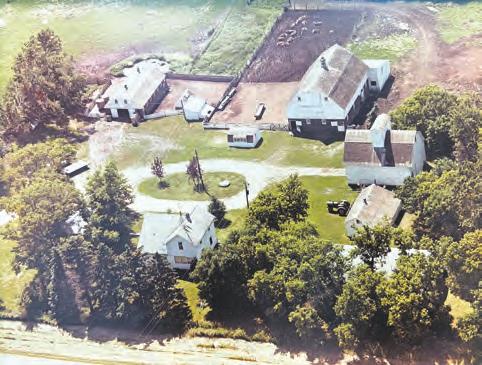
The house, however, had no damage. And Tillie, who had gone to the basement, was unhurt. By then, she was living alone on the farm, widowed when Dick died in December 2009. She remained on the farm another dozen years — until she reached the age of 100 and a half.
“Randy would go out there several times a day and she stayed happy there at the farm,” said Joyce.
Tillie moved to the South Shore Care Center, in Worthington, in October 2021, and died there in November 2022.

“She had a good, long life,” Sarah said.
The matriarch
For her granddaughters Laura and Sarah, Tillie played an integral role. It’s because of her the two women have many fond memories of the family farm.
“Laura and I pretty much grew up on the farm,” shared Sarah.
“Grandma was our day care. Grandpa helped more with Laura, but he had a stroke before I was born.”
TODAY’S FARM WEDNESDAY, MAY 31, 2023 | 7 507.836.8389 • 2645 Broadway Ave • Slayton, MN 507.472.8748 230 S 3rd Ave• Lismore, MN• www.hsmoretel.com
Providing internet service throughout: NOBLES, SOUTH-CENTRAL MURRAY & WESTERN (ACKSON COUNTIES
Julie Buntjer/The Globe Members of the Jacobs family standing in front of the farm house on their century farm include Janet Smid (from left), Sarah Jacobs and her parents, Joyce and Randy. Randy and Janet are siblings. Missing from photo is Laura Jacobs.
JACOBS: Page 18
Photo contributed by Randy Jacobs An aerial view of the Jacobs farm, believed to have been taken in the late 1970s or early 1980s.
There was a lot more water in the area in the horse-drawn-sled days.
“You could skate from their house a good 3 miles to Bergen,” Curtis said.
Garfield trapped muskrats, sold the fur and earned enough to buy a team of horses — only for his father, Fred Paulson, to send the horses to North Dakota with Garfield’s brother when he struck out to farm on his own.
Beginnings
Norwegian immigrant Jon Paulson was just 23 years old when he homesteaded that first chunk of land. He married fellow Norwegian Brynhild Fredriksdotter Rosset in 1869.
“They started out with an underground dugout
dug into the side of a hill, and lived there until they could afford (a house),”
McDaniel said. “Minnesota appealed because the climate was still close (to Norway’s).”

That first house still exists on the property, though it too has seen significant changes from
its original state. Garfield told his children about raising the house using horses so that a basement could be put underneath. The roof was raised as well, and a kitchen was added to the front of the building.
No one lives there now, and eventually, the



Our Version of Crop Rotation

Paulsons agree, the building will need to be torn down. The old barn is still on the site as well, and it’s still used as storage space.
Unusually, Jon’s father, Paul, followed his son to America to help, along with his wife.
The risks of farming in
those days were very real, and changed the shape of the Paulson family forever when Jon’s oldest son, also named Paul, died in a threshing accident at age 26. Between that Paul and his nine siblings, only three lived to be older adults.
Jon managed to get separate farms for all three of his remaining children who farmed,
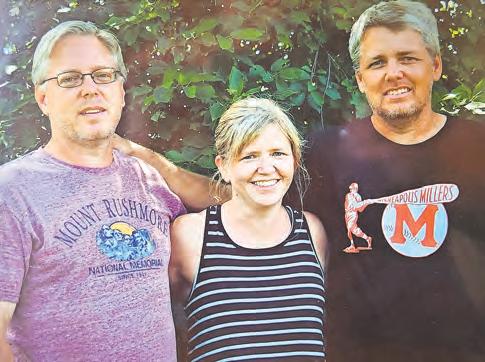

including Fredrick — Curtis’ grandfather — who received a larger share than the others so he would be able to take care of the family. And he did.
“They taught us that family was the best thing,” Curtis said.
“They sure did, Curtis, didn’t they?” McDaniel agreed. “... I just hope this place stays in the family.”
8 | WEDNESDAY, MAY 31, 2023 TODAY’S FARM 1809 Forman Drive • Pipestone, MN 56164 | (507) 825-4207 • www.pepsi.com
Today’s farmers feed the world, we quench the world’s thirst!
Kari Lucin / The Globe
Daniel Paulson poses for a picture during a brief break from his work on the original Paulson farmstead.
From Page 5
Photo courtesy of the Paulson family John, Maria and Daniel are the children of Curtis and Myra Paulson.
PAULSON
Chesley sesquicentennial farm still rockin’ in Rock County
Rhubarb and roses among reminders of Walkup/Chesley ancestors
BY JANE TURPIN MOORE
The Globe ROCK COUNTY —
Maybe it was inevitable that the Walkup/Chesley family would persist in farming their Rock County homesteads for 150 years — and counting.


After all, once they’d survived the historic “children’s blizzard” of January 1873 — their very first winter on the claim — in a sod shanty, everything else probably seemed manageable.
But over the course of 150 years, one can expect other challenges to arise, and indeed they did, like the time in the early
1900s when Ella (Walkup) Chesley needed an emergency appendectomy but snow blocked all the roads and a snow-shoveling brigade was required to forge a narrow pathway for her all the way to McKennan Hospital
in Sioux Falls, S.D. Or the untimely death of Roy Chesley, who was trampled by a bull in 1930 and didn’t survive his injuries, thus requiring his son Cecil, then a high school senior, to drop everything and take over the farm.
FARM TO TABLE
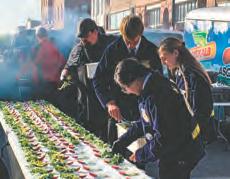


July 18, 2023

All proceeds go to the Agribusiness Scholarship Fund.
Cecil’s grandson, Jason Chesley, has, since 2006, lived on the northern homestead his great-great-grandfather Charles Walkup filed for as a 21-year-old in 1873.

TODAY’S FARM WEDNESDAY, MAY 31, 2023 | 9 2385 Highway 60 -Worthington, MN 507-343-4265 Diesel Parts & Service Sponsored by the Agribusiness Committee, JBS, Nobles County Corn & Soybean Growers, Hickory Lodge Bar & Grill, Nobles County Dairy Association, and Worthington Farmer’s Market Tickets on sale now at FORWARD Worthington or from any Ag Committee Member. Only 250 available. Each ticket holder will receive $10 to use at participating Farmer’s Market Vendors. 9th Street, Downtown Worthington 5:30 p.m. Social • 6:30 p.m. Meal • $50 per person
Photo courtesy Diana Hensley/On the Farm Jason and Angela Chesley are shown with their two daughters.
Photo courtesy Jason Chesley Charles and Evangelyn Walkup
CHESLEY: Page 12
Fulda Century Farm is a light in the dark for the Meier family
 BY SCOTT MANSCH
BY SCOTT MANSCH
The Globe FULDA — They say it’s darkest before dawn, and for Lowell Meier the absolute pitch black moment of his life was in mid-October of 1976.



That’s when his mother, Mabel, and father, Ernest, were killed in a car accident near Avoca.
“It still hurts,” said Lowell, his lips trembling and eyes glistening.
But a visit to the Meier family farm, where Ernest and Mabel nurtured a large family and where grandfather August Meier established what is now a Century Farm in Murray County, reveals only light.
Bright, optimistic light pervades throughout the home of Lowell and Cindy Meier, just east of Fulda on Highway 62.

“If you notice, I’ve got no curtains on a single window in this house,” said Cindy with a smile. “We’re out here alone and I don’t worry about it a bit.
“So we have all this wonderful light all the time.”
It’s true.
Lowell’s grandfather, August, established the farm in 1923 after purchasing the 160-acre homestead from German immigrant Peter Peterson. Ernest purchased the southwest quarter-section of the place in 1946.
Following the tragic car crash that took the lives of Ernest and Mabel, their farm was divided among
their seven children.
Lowell and his sister Linda (Jacobson) eventually became owners of 80 acres each, with Lowell remaining on the home place.
The original Meier Farm, where Lowell and Cindy raised their family
and steadily improved the 113-year-old home and many buildings surrounding the place, has now become a Century Farm. And that is special for Lowell, 66, who has battled Parkinson’s Disease in recent years.
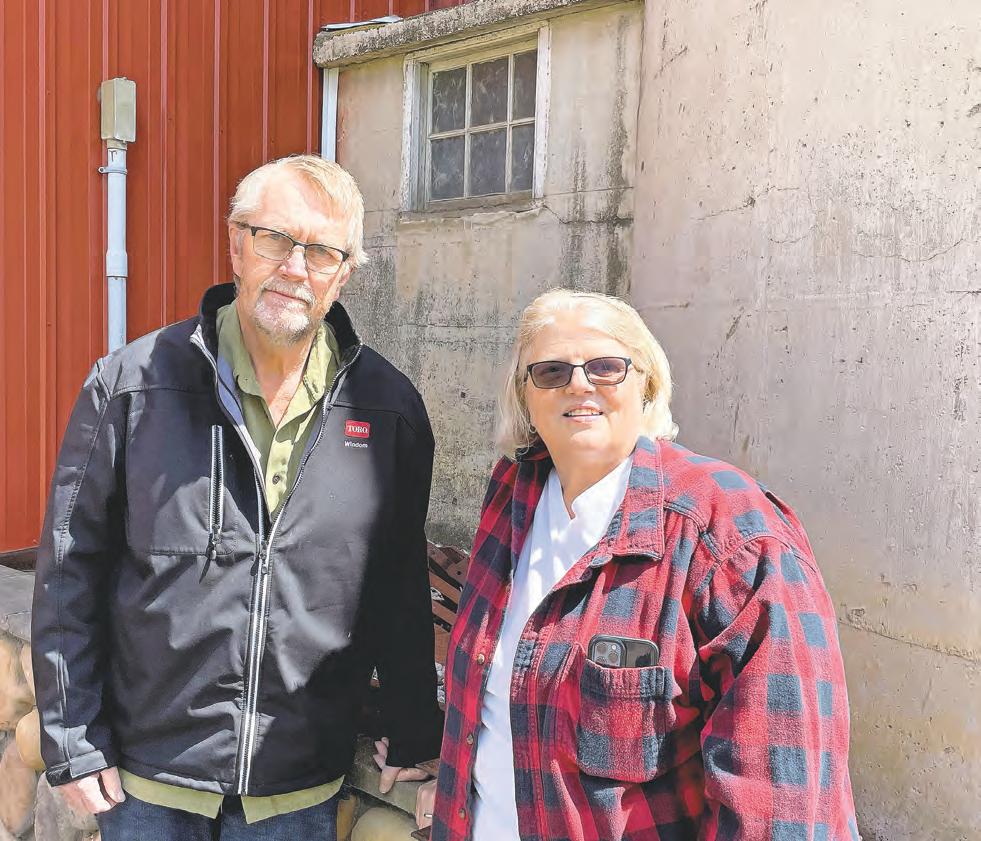
“It means quite a bit,” he said softly. “I guess I’ve been thinking about it for years and hoping I live long enough to see it.”
Then he smiled. “But I haven’t made it yet.”
Lowell and Cindy have persevered. They married in 1981 at St. Gabriel’s Catholic Church in Fulda. Religion has been a cornerstone of life and relationships for decades in the Meier family.
Indeed, faith sustained Lowell, who was just 19 and had recently started farming with his father when his folks were killed. And faith was a factor when Lowell met Cindy, who was a year younger and had gone to college to become a teacher.
“We were in high school at the same time, but we didn’t really run with the same crowd,” Cindy said.
Cindy (Haar) was a “city” girl, having grown up in the middle of Fulda where her father owned a clothing store. Upon the union with Lowell, she was told not to worry about living on an isolated farm — but that trips would not be wasteful pursuits.
“I can remember one of the first things he said to me when we got married,” Cindy said. “He goes, ‘We won’t be running to town just to get a jug of milk.’ I needed a plan so we wouldn’t waste gas.”
The anniversary date is September.


“We’re celebrating it on the ninth of September,” said Cindy cheerily. “We’re having a party.”
Of course, living this long on the land has not exactly been a picnic. But

But it’s all worked out. So not to worry. And they haven’t.
Cindy had a long career as an educator in Heron Lake-Okabena. During the farm crisis of the 1980s when money was tight, Lowell began working at Toro in Windom.
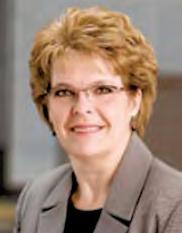


10 | WEDNESDAY, MAY 31, 2023 TODAY’S FARM 84910th St.• Worthington 507-372-7384 Windows • Roofing Siding•Decking Cabinets LampertLumber.com Drainage and Excavation Rocky Marco Ocheyedan, IA • 712-758-3503 Cell 712-330-1105 • FAX 712-758-3727 ADVANCED DRAINAGE SYSTEMS, INC. MEGA, INC. I 001619102r1 Rocky Marco Ocheyedan, IA 712-758-3503 Cell 712-330-1105 FAX 712-758-3727 DRAINAGE AND EXCAVATION Phone 507-836-8814 •Cell507-360 -9721• Fax507-836 -6380 Marilyn@MaplePathFinancial.com 2500 Maple Av •Slayt ,Minn ota56172 INVESTMENTS|INSURANCE |RETIREMENT FINALEXPENSES|LONGTERMCARE Marilyn M. Carlson Registered Representative LicensedInsurance Agent MN Lic #22229 Phone 507- 836- 8814 •Cell507-360 -9721• Fax507-836 -6380 Marilyn@MaplePathFinancial. com 2500 Maple Avenue •Slayton,Minnesota56172 Secu rities offeredthrough Un ited Plan ners Fina ncia lSer vice Member FINR A/SI PC.MaplePath Fina ncia la nd Un ited Plan ners Fina ncia lSer vice arenot affiliated anddonot offert ax or lega ladvice. IN VESTMENTS|I NSUR ANCE |R ETIR EM ENT FI NALEXPENSES|LONGTER MCARE
Registered Representative LicensedInsurance Agent MN Lic #22229 Marilyn M. Carlson Registered Representative Licensed Insurance Agent MN Lic #22229
Marilyn M. Carlson
Scott Mansch / The Globe
Lowell and Cindy Meier, Fulda, stand in front of the barn on their Murray County Century Farm.
MEIER: Page 11
They did not consider selling the farm, even though lenders had urged him to do just that.
“I did what I could to save money,” said Lowell, who went into a partnership with his brother, Gerry, in hopes of preserving the farm. “We got by the best we could.”
Cindy recalled when, as a newlywed and fresh college graduate, she heard about the teaching job in Heron Lake.
“I didn’t even know where the school was, or even where Heron Lake was,” Cindy smiled. “So (Lowell) drove me there right after we got home from our honeymoon. I got the job and worked there until I retired.”
The family of Lowell and Cindy includes three daughters — Laura, Hilary and Adrienne — and three grandchildren.
There is hope that the Meier legacy will continue on the farm. Lowell’s nephew, Matthew Meier, is a young family man who has rented the home place and is now raising corn and soybeans on the Century Farm.
Lowell and his brothers and sisters have many relatives in Murray County. And to be sure, the Meier family has held firm.
“We stuck together,” Lowell said. “On holidays we still get together and see everyone.”
Lowell and Cindy have made vast improvements to the farm and home. Their relatives are justifiably proud of that and excited to celebrate the 100 years of family ownership.
August Meier, a native of Germany who originally came to Murray County around the turn of the century, would be beaming.
“I think he’d be proud,” Lowell said softly.

“That’s right,” said Cindy.
August died in 1952. His son Ernest worked the farm successfully from 1946 until his death. The same home that Lowell and Cindy maintain today was also once the home of August and Ernest.

“Dad had an eighthgrade education,” Lowell said. “He was very sharp.” What made the Meier ancestors fall in love with southwest Minnesota?
MEIER: Page 14
Wean To Finish Hog Site - For Sale
We are honored to have the opportunity to sell the Carlson, Wean to Finish Hog Confinement Barn Site. This is an excellent opportunity to buy a well maintained 2011, 2400 hd wean to finish tunnel ventilated hog barn, which is a great investment property.
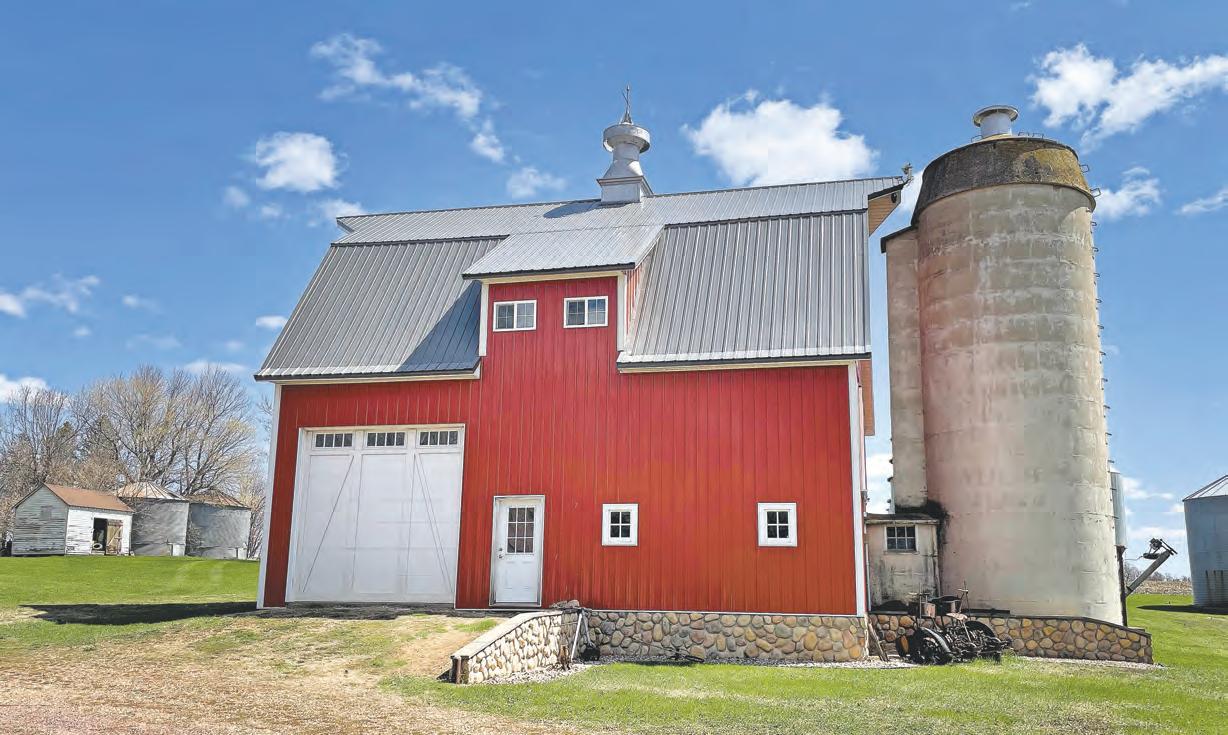

Taxes: Taxes payable in the year 2022 will be paid by the Seller. Taxes payable in the year 2023 and beyond will be the responsibilty of the Buyer. Taxes are currently $392.00 Full Homestead.
Terms: Cox Realty & Land Services, LLC will be offering the property through Private Treaty and will start with a written offer along with a 20% earnest money check down and a letter of availability of funds from your lender. Offers may be mailed in or dropped off at Cox Realty & Land Services, LLC, 102 E Pearl St. Ste. 103, Adrian, MN 56110. Offerors will have a chance to raise their offers by phone until the highest and best offer has been accepted.

TODAY’S FARM WEDNESDAY, MAY 31, 2023 | 11
Property Location: A Tract in the SE ¼ NE ¼ (Subject to Survey) Section 29-108-4. Lake Sarah Township, Murray County, MN.
Cox Realty & Land Services, LLC 102 E Pearl Street Suite 103, Adrian, MN 56110 Alan Cox, Broker - 507-360-7500 Cindy Cox, Broker Associate - 507-483-2218 Fax: 507-483-2293 • Email: coxrealty@live.com www.coxrealtyandlandservices.com
813 3rd Street • Jackson, MN
Scott Mansch / The Globe
From Page 10
The bright red siding of the Meier barn contrasts with the green of the grass and the blue of the skies on a clear spring day.
MEIER
“Charles was a wagon-maker, and his father Willard was a wagon-maker by trade, so Charles probably learned it from him,” said Jason’s wife Angela Chesley, explaining that farming was new to the pair at the start.
Charles was 20 when he arrived in Rock County’s Beaver Creek Township along with his parents, Willard and Mary. They’d come to the area from Wisconsin with a wagon train of other settlers seeking fresh land and lives.
But because a man couldn’t file a claim until he was 21, Charles had to wait until he came of age in 1873 to claim the homestead, meaning the southern portion of the property first claimed by his father marked its sesquicentennial a year sooner, in 2022.
Respectfully, the Walkups’ neighbors kept their hands off the adjacent acres intended for Charles until he was old enough to file.
Today, Jason Chesley oversees an 800-acre farming operation that includes corn, soybeans, some alfalfa, about 400 feeder cattle and 40 to 50 stock cows. It’s located approximately five miles west of Luverne.
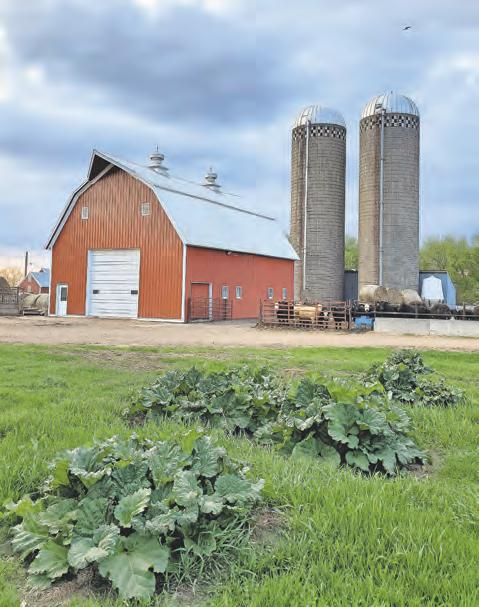
“Everything is raised for slaughter,” said Angela, while Jason was in the midst of planting season. “We have two acreages tied together; we live on one and Jason’s mom, Mary,
lives on the other.”
Jason, a 1995 graduate of Hills-Beaver Creek High School, is one of Mary and the late Leroy Chesley’s five children. (Mary Chesley is retired from a nursing career in Sioux Falls.)
Following high school, Jason graduated from Southeast Technical College in Sioux Falls as an automotive technician. He’d worked on the farm parttime and was only about a year into married life with Angela (they wed in 2006) when his dad Leroy unexpectedly died in the spring of 2007 at age 66.

“Jason took over the farming at that point,” said Angela, mentioning Jason had previously been a mechanic at Papik Motors and had helped his dad evenings and weekends since his high school days.
Charles and his wife Evangelyn held the farm from 1873 to 1931. Their daughter, Ella (Walkup) Chesley, was its official owner from 1931-61, while Cecil and his wife Caroline took the baton for the next 30-year period from


1961-91. Leroy and Mary were the owners of record from 1991 to 2006, and Jason and Angela have owned it since then.


Fortunately, Angela grew up on a farm in central Minnesota where her father raised corn, soybeans and hogs, so the demands of an agricultural life were not new to her.
Notably, the Walkup/ Chesley families (of British Isle descent) located their farms on land that, according to history passed down, was along an old stage coach route. Today, I-90 runs just a short distance south of the property, continuing the tradition of adventurers and commuters alike passing nearby.
Jason’s great-great-grandparents first erected a frame house on the property in 1875. With several additions over the years, it lasted until 2019 (when it was taken down) and was Jason and Angela’s residence until they built a house there in 2018.

“Besides needing updating on the outside, it
wasn’t well insulated; we had pipes freezing every winter,” said Angela.

When they began weighing the costs of replacing the roof, siding and windows, it became apparent an all-new house would ultimately be more cost-effective than further improving the old storyand-a-half structure. Still, they preserved a portion of the 1875 house; a pane of frosted glass that was part of a door in the original house has found renewed life and significance in the lower level of their circa2018 house.
And a barn that dates to the early 1900s is still in use, as are a cattle shed and some other buildings used for livestock.
Annual reminders of their familial predecessors arrive each spring in the form of blooms on a climbing rose bush planted by Jason’s great-grandmother Ella, and via a rhubarb patch which, according to family lore, was established by the Walkups in the 1870s.
“I usually make rhubarb
custard cake with it,” said Angela.
As the Chesleys mark their farm’s 150-year milestone, they’ve paused to reflect on the changes the property has seen over time, realizing true “family farms” are becoming rarer with each passing year and that Jason’s ancestors may never have fathomed the land they claimed in the 1870s would still be occupied and operated by their descendants five generations later.
But with Angela — a CPA who, in addition to being employed by an Iowa-based accounting firm, keeps the books and manages the Chesley farm
finances — involved and their 12- and 13-year-old daughters pitching in occasionally with cattle care, a handful of egg-laying chickens, bottle calves and pigs during the summer months, theirs is still a family farm at this point in history.
While the mantle of family legacy rests somewhat uneasily on Jason’s shoulders at times, he and Angela take comfort in the fact that Jason’s ancestors didn’t always have a plan going forward — yet everything worked out nevertheless.
Said Angela, “You never know what the future might bring.”
12 | WEDNESDAY, MAY 31, 2023 TODAY’S FARM • Welding All Types - Including Aluminum & Tig • Ag & Industrial Repair • Fabricating & Machining • Hydraulic Hose Repair • Powder Coating - New Product / Refurbish Old • Plazma Table/ Sign Design - Indoor or Out • Decorative Metal Projects AL AHLERS, OWNER FULDA, MN • SHOP: 507-920-8164 OFFICE: 507-227-1144 BUILT TO LAST PRECISION MFG. & MACHINE Authorized Dealer for MDS Attachments & Quick Attach P.O. Box 8 Lismore, Mn 56155 507-472-8221 http://www.statebankoflismore.com Dedicated to serving your agricultural lending needs. • Ag Operating • Equipment Loans • Leasing 001713829r1 D & K Transportation Ocheyedan, Iowa
712-330-1090
Photos courtesy Jason Chesley Jason and Angela Chesley’s home was constructed in 2018.
CHESLEY From Page 9
The rhubarb patch on the Chesley farm is believed to have been planted in the 1870s by the Walkups.
Engebretson farm near Hadley has a legacy
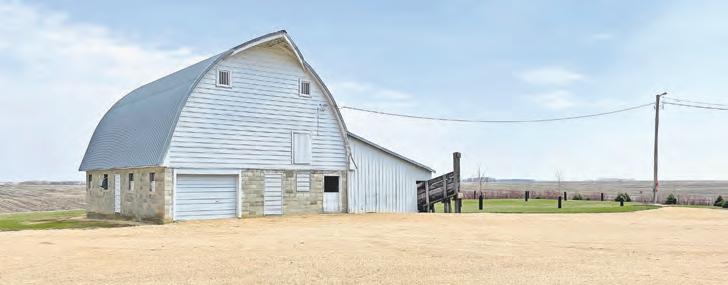
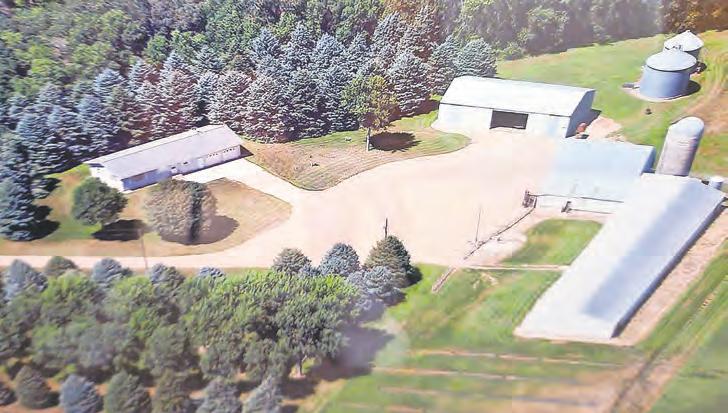

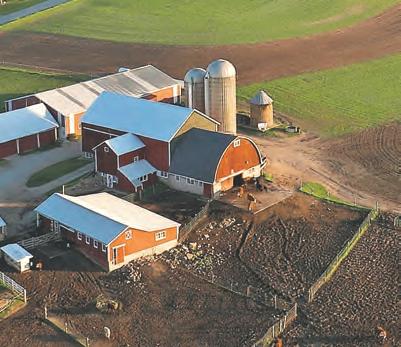 BY SCOTT MANSCH
BY SCOTT MANSCH
The Globe
HADLEY — Embrick
Engebretson was 19 with the Civil War in his past and a doubtful destiny in his future when he mustered out of the Seventh Minnesota Volunteer infantry of the Union army.
A few years later he came to Murray County and homesteaded a claim near Beaver Creek just west of a tiny settlement called “Center,” so named because it was in the middle of the county.
Embrick settled his claim in 1873, about 11 years after the tragedy at what is now called Slaughter Slough, when the Dakota War conflict with Native Americans became known as the Lake Shetek Massacre.
The Minnesota prairie was not entirely safe in those days. Nor was it an easy existence.
When Embrick started his farm it was about 14 years before “Center” became known as Slayton.
And now in 2023, the 130-acre Engebretson Farm — under the direction of Embrick’s great-great-grandson Mike Engebretson — is celebrating its 150th birthday.
“Farming is a way of life,” said Mike. And, he added, it’s one of hardships, but it also brings great rewards.
Mike’s mother Betty (Hintermeister), who lost her husband Charles in 2007, is mindful that five generations of Engebretson men have maintained the farm.
“Chuck was fun,” Betty said, eyes twinkling. “And they all worked hard.


“Embrick and those pioneers had to be so brave,” shared Betty, who lives just north across Beaver Creek from the family farm where Mike and his wife Gail (Ackerman) now reside.
She said the legacy is close to her heart.
“I’m quite proud of it,” Betty said. “Proud that each father and son made it through. Because it wasn’t easy for any of them.”
Mike, Gail and Betty welcomed a visitor one afternoon recently with cake and refreshments. They sat in the kitchen of a beautiful house known as the “home place,” located not far from where Embrick had once fashioned a dugout and then a sod house.
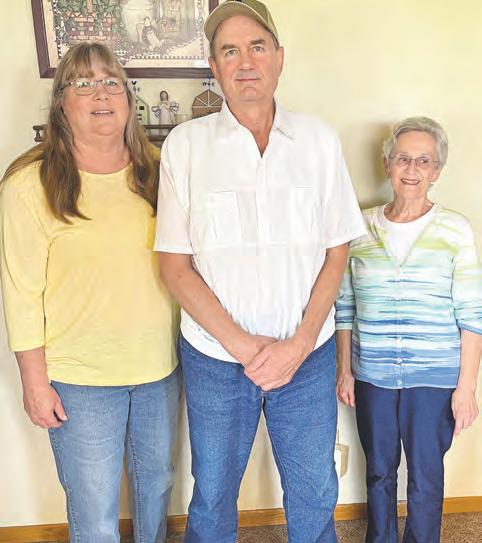
Suffice it to say that 150 harsh winters have been endured since then.
I’ll work hard to help you protect your farm, with coverage from State Farm that’s broad enough to meet all of your farm and auto insurance needs.

The milestone means much to all of them.
“It is a big deal to me,” Mike said. Then he paused. “I feel connected to the land. It’s part of you. And it’s like all of us together, all the generations … It’s a big, big deal to me.”
The farm, which once included livestock but is now strictly a corn and soybean operation, is one of the oldest in southwest Minnesota.
The land is still providing for Mike, just as it did for his father, grandfather, great-grandfather
and great-great grandfather.
Said Betty, 86: “It’s all been taken care of and handed down. Not handed down free, but handed down. And they all worked very hard.”
ENGEBRETSON: Page 15
TODAY’S FARM WEDNESDAY, MAY 31, 2023 | 13 Check In-Store Specials! WATERPROOF #400 YOUR FEET WON’T CARE WHAT THE WEATHERMAN SAYS. WORTHINGTON FOOTWEAR & REPAIR 507-376-6393 914 3rd Avenue Downtown, Worthington Mon-Fri, 10am-5:30pm NO SATURDAYS Jason Vote 716 Oxford Street Worthington, MN 56187 507-372-2906 www.jasonvote.com statefarm.com®
Scott Mansch / The Globe
The Engebretson family includes Mike and Gail Engebretson, shown here with Mike’s mother Betty.
Photo courtesy of the Engebretson family
An aerial photograph shows the Engebretson farm, designated a sesquicentennial farm for 2023.
Scott Mansch / The Globe
A historic barn still sits on the Engebretson farm.
“I’m going to guess it was having a church family,” said Cindy.
Lowell nodded his head.
“That’s why August moved to Fulda, because of the (Lutheran) church and school,” he said.

Cindy’s eyes twinkled. You see, she is Roman Catholic.
“We raised our girls this way,” she said. “We’d go to his church one Sunday and then to mine the next. We’d alternate. But we always went all together.”
She smiled.
“So our girls now call themselves “Cath-erans,” she said of the merging between the two religious denominations.
Lowell had many hobbies as a young man, among them motorcycles. He has a Harley Davidson bike that was purchased perhaps 40 years ago. He played softball and
cards with neighbors and friends.
For many years his life has revolved around improving the home place.
A barn that was built perhaps 100 years ago has been restored, complete with a loft that’s been remodeled into a popular
gathering spot for friends and family. It’s called “Boars Nest,” and has an epic Grain Belt beer sign obtained from the former
Holinka Distributing of Fulda.
Lowell’s life has been spent in Murray County. And he has no regrets.
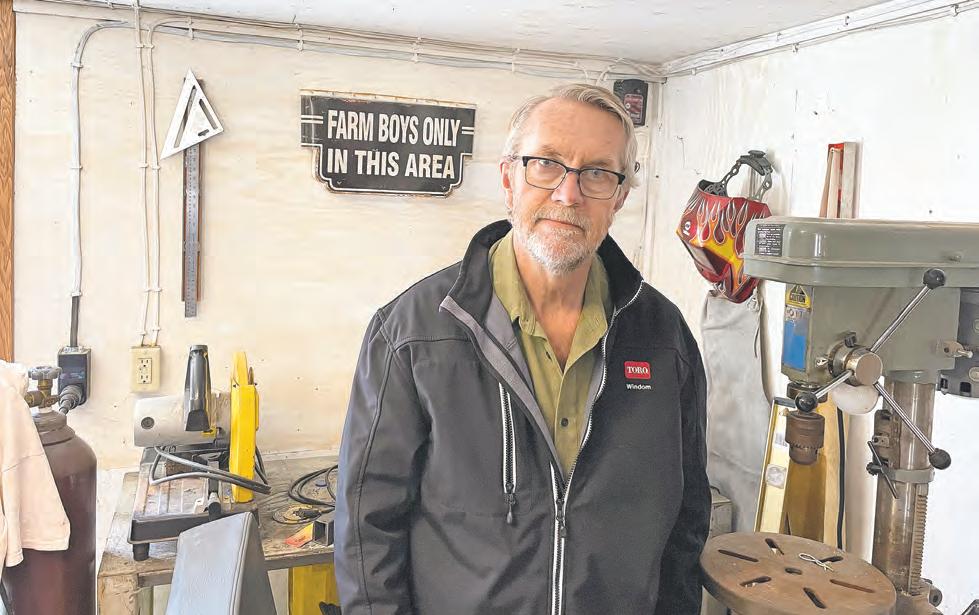

“No,” Lowell said. “I was born and raised here and have lived in this house longer than any of my relatives.”
The families of August and Ernest once said the same thing.
Said Cindy: “This home was theirs. And now it’s ours. I never thought we’d lose it, even when times were hard.”
On a calm spring morning a few weeks ago, hard times seemed far removed from the Meier Farm. Lowell and Cindy smiled easily and often, especially when pondering the solitude of country life.

Only when asked about his father did Lowell struggle to find words or to maintain his composure.
“I wanted my Dad to be proud,” he said, lips trembling once more.
Though an unspeakable tragedy is also part of this farm’s history, a beautiful bright light surrounds the lives of Lowell and Cindy. Just as it did for their ancestors.
It’s been that way for 100 years and counting.
14 | WEDNESDAY, MAY 31, 2023 TODAY’S FARM Attheforefrontofyour financialneeds. *Allloanssubjecttocreditapproval.NMLS #405023 ** Federally Insured byNCUA Fulda |Jackson |Windom |Worthington 507.775.2802 www.leadingedgecu.org FarmersEdgeHighYield CheckingandSavings ConsumerLoans MortgageLoans &MuchMore!* 930 MAIN ST. 507-442-4341 OR 1-800-658-2395 WWW.DEBOERCHEVY.COM
Scott Mansch / The Globe
MEIER From Page 11
Lowell Meier, whose grandfather established the Meier farm in 1923, stands with his shop equipment.
ENGEBRETSON




From Page 13
Gail is Mike’s soulmate on the farm. And like the Engebretson men before Mike, she has proved to be a devoted partner in the venture.
“I love everything about farming. I wouldn’t want to be any other place,” Gail said. “Here you’re the caretaker of the land. I love all the wildlife around us.”
Of course there are many reasons farmers

embrace their station in life.
“You are your own boss,” Mike said. “You’re independent.”

Such independence stretches back 150 years.
There are many mementoes held dear by the Engebretsons.
Mike displayed the original deed to the homestead, dated Aug. 20, 1873. It is signed by U.S. President Ulysses S. Grant. Several years before that, Embrick had entered the Union army. Enlistment papers

indicate Embrick received $200 for taking the place of a wealthy man who did not wish to serve.


The official document is signed by the attending physician, none other than William Mayo of Rochester, whose sons William and Charles were among founders of the famed Mayo Clinic.
Embrick and his wife, Elizabeth “Lizzie”, were born in Norway. Their son Edward L. was born in 1883 and lived his entire life of 82 years on the farm.
Descendants include

Edward Allen Engebretson, who was Mike’s grandfather, and Mike’s father Charles.
Embrick and Lizzie had four children.
A family history written by an Engebretson relative named Merle describes Embrick as a thrifty, industrious man who became involved in local politics. He served as a constable and became a member of historic military organizations, including the Grand Army of the Republic and the John Logan Post of Slayton. Family tradition holds
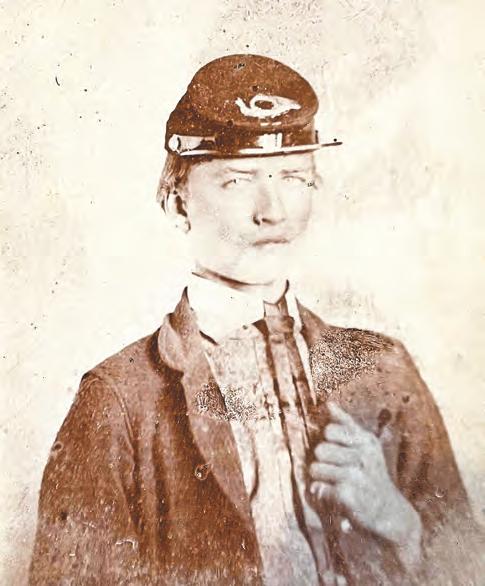
that Embrick was quiet, stern and serious. That he was all business.
And that his wife Lizzie was a “bubbly and loving person with a wonderful sense of humor.”
Both Embrick and Lizzie, who were faithful and church-going folks, are buried in the Slayton cemetery just north of town.
Mike said he respects all of his ancestors, especially his great-great-grandfather. There are still trees thriving near the creek that Embrick planted some 150 years ago.
And there is an historic barn just east of the home place that Mike’s Grandpa Ed built decades ago and has been refurbished.
Mike, who graduated from Slayton High School
in 1977, is nearing retirement age. He pondered a moment when discussing the future of the farmland at the only home he and many of his ancestors have ever known.

“We’ll never sell it,” Mike said softly. “Not any of it.”


And by the way, there are young Engebretson boys in the family. Mike and Gail have two sons, Andrew and Jacob. Jacob and his wife live in Kalamazoo, Mich., with their children Eleanor, 7, and Edward, 3. Andrew and his wife live in Slayton and have two little boys who like to ride on the tractor with their Grandpa Mike. One of the little guys is named Archie, 1. And the other’s name? You guessed it: Four-yearold Embrick Engebretson.

TODAY’S FARM WEDNESDAY, MAY 31, 2023 | 15 NICKEL& ASSOCIATES INSURANCEAGENCY,INC. 507-376-9788 “Insurance Since 1921” LOOKING FORWARD TO SEEING YOU HOME SAFELY 1709 N. Humiston, Worthington Colby Nickel, Agent Jim Nickel, Agent Tina Nickel, Agent Trevor Nickel, Agent Trust in Tomorrow Don’t let your attention drift while driving during planting season. Local farmers are busy nurturing the world’s food supply, so remember to prioritize their safety. Worthington, Minnesota | 229 10th St. | 507-372-2933 Brewster, Minnesota | 224 10th St | 507-842-5933 www.rollinghillsbank.com
“Commited to Agriculture and helping you with your Financial Future”
Photo courtesy of the Engebretson family The Engebretson brothers are Archie, 1, and Embrick, 4.
Scott Mansch / The Globe Mike Engebretson shows the original deed to his 150-year-old farm located between Slayton and Hadley in Murray County.
Photo courtesy of the Engebretson family Embrick Engebretson was 19 when he mustered out of the Seventh Minnesota Volunteer infantry of the Union army and a few years later became a homesteader in Murray County, founding the Engebretson farm.
“The front line was so close that Ann could hear the cannons firing and didn’t know if Simon survived,” Sandager said. “When the war ended, Simon told Ann, ‘Let’s get out of here. Abraham Lincoln is giving away land through the Homestead Act.’”
To get the land, new settlers had to live on the land for five years, plant a grove and pay the deed tax.
“Simon and Ann packed up their stuff and just before they left, Ann’s parents came running with a spinning wheel for her inheritance and to mend fences,” Sandager said. “The couple hopped on a steam ship that took them nine days to cross the ocean. They got off at Ellis Island in 1865 and learned that Abraham Lincoln had been assassinated, which meant the end of the war.”
The Skovgaards traveled by train to Cedar Falls, Iowa, which had become a gathering point for immigrants as there was a Danish settlement there.
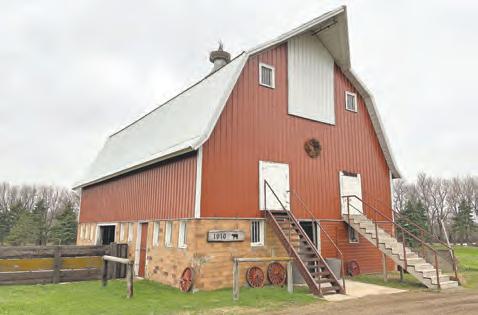
That’s where they remained until October 1872, when the family bought oxen, a covered wagon and all of the supplies to fill it and headed west with a group of Danes.
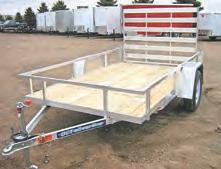
“October was a good
month to go because the streams were shallower and the ground was drier, so you could make good time,” Sandager shared.
“With oxen, they could go 10 miles a day. The 350 miles took them a month and a half.”
Along the way, of course, there were days that it took longer if they had to cross a river, to rest the animals, and to bury the dead.
“There were people dying enroute — diseases like typhoid and cholera,” Sandager said.

When they made it to Ash Creek, the Sandagers stopped and spent the winter there.
“The next spring, (Simon) walked over here by himself — crossed seven miles and came west of Hills, though there was nothing there at the time,” Sandager said. “He put a stake in the ground … then he had to go to Luverne and said he wanted that quarter.
It had been surveyed out and he paid the deed tax of $2 for 160 acres.”
Once that was done, he returned to Ash Creek for Ann and Charles and they traveled to their new home — a quarter section with nothing but prairie grass.

“They put up a sod house, planted some trees and they started with 10 acres of wheat that he seeded,” Sandager said.



Before they could harvest the crop, the grasshoppers struck and destroyed the crop.
The Skovgaards saved their garden, but without the wheat Simon needed to borrow money for seed and for food.
“The bankers said no, so in the heat of the summer, Simon heard they had work in Sioux City, (Iowa),” Sandager said. Simon walked there, hoping to get a job on the railroad, only to find out there was no work once he arrived. He then
The century-plus Sandager house is currently home to the sixth and seventh generations of the Sandager family.

headed back north, toward Worthington, and found a job there shoveling rock and coal for the railroad.
“By fall he had earned enough money to tide them over the winter,” said Sandager, adding that Charles had also found work that summer with a neighbor three miles away.
The next spring, Simon planted even more acres of wheat, and the grasshoppers struck again. This time, he collected enough seed to plant the next year.
“He and Charles would shoot rabbits for meat,” Sandager said, noting that the history was all recorded in journals — some in Danish and some in English. Around this time, Simon purchased an 80-acre parcel directly
west of his quarter section.
Grasshoppers struck for a third straight year during the next growing season, prompting the area’s farmers to burn the grass to kill the grasshopper larvae the following spring.

“(The fire) got out of control and just about burned down his sod hut, but they got a good crop (of wheat) and that was the start of Simon’s career.”
Charles, who was 11 years old when the family settled in Rock County, went on to attend college in Canton, South Dakota, where he heard the most beautiful music coming from the auditorium.
asked her out to some gathering,” Sandager said of Charles’ first encounter with Ingeborg at the organ. They married not long after and moved to the Skovgaard farm with Simon, who was widowed upon Ann’s death in 1900. Charles and Ingeborg eventually moved across the road, where they raised their nine children. During his life, Charles served as a Rock County commissioner, the county recorder and was a botanist. He planted fruit trees and grafted them for different species of apples and also started pear trees. Charles also grew what may have been the first corn in Rock County, after the Hills Crescent reported that it couldn’t be grown there.
16 | WEDNESDAY, MAY 31, 2023 TODAY’S FARM For parts & service, call PSI. 1-800-555-1677 Serving NW Iowa, SW Minnesota, SE South Dakota & West Central Minnesota Powerwashers Sales - Service - Parts *For commercial use. Offer subject to CNH Industrial Capital America LLC credit approval. See your New Holland dealer for details and eligibility requirements. Depending on model, a down payment may be required. Taxes, freight, set-up, delivery, additional options or attachments not included in price. Offer subject to change or cancellation without notice. © CNH Holland America LLC. All rights reserved. New Holland Agriculture is a trademark registered in the United States and many other countries, owned by or licensed to CNH Industrial N.V., its subsidiaries or affiliates. CNH Industrial Capital and New Holland Construction are trademarks in the United States and many other countries, owned by or licensed to CNH Industrial N.V., its subsidiaries or affiliates. Westbrook, MN 507-274-6101 westbrookagpower.com W estbrook A g P oWer Dierks Trailer Sales Dierks Trailer Sales 2039
St Slayton,
507-220-8170 dierkstrailersales.com SANDAGER : Page 17
20th
MN 56172
“The smooth talker that he was, he asked her for the sheet music and then SANDAGER From Cover Page
Photos by Julie Buntjer/The Globe The Sandager barn is home to horses on the lower level, while the upper level has been transformed into a party space used for several wedding dances.
“He had cobs of 9 inches long and a girth of 7 inches,” Sandager said, adding that the newspaper retracted the story when he showed them the corn.
Charles also joined the local creamery when a call went out that more cows were needed. He doubled his herd to 12 cows and several other neighbors did the same. As a result, they had enough milk to sell cream and make butter.
Meanwhile, as their children grew to adulthood, three of the Skovgaard daughters went on to marry three Sandager brothers from Tyler.


“Clara, the eldest, got the pick of the litter of Sandagers. She married Nels and they moved down here to the home place and bought it from Charles,” Sandager said of his grandparents.
Nels and Clara lived in the sod house for about seven or eight years before starting construction on a house.
“The house came by train,” Sandager shared, noting that his daughter, Brittany Sandager Steensma, her husband and their son and daughter call it home today. The barn that still stands on the Sandager farm was also purchased through mail order and all of the lumber and the directions to build it arrived by train.
“We think it was a
Montgomery Ward’s barn,” Sandager said. The upstairs was turned into a party room and several members of the Sandager family have had wedding receptions there.
“Nels did a lot of brick work, so the bottom part of the barn was made out of the clay from up on the hill,” Sandager said. “They baked the bricks and put it together.”
Nels and Clara raised nine children on the family farm. Nels, who was also a Dane, had attended college at the University of Minnesota. In addition to farming, he operated a butchering business on the side.
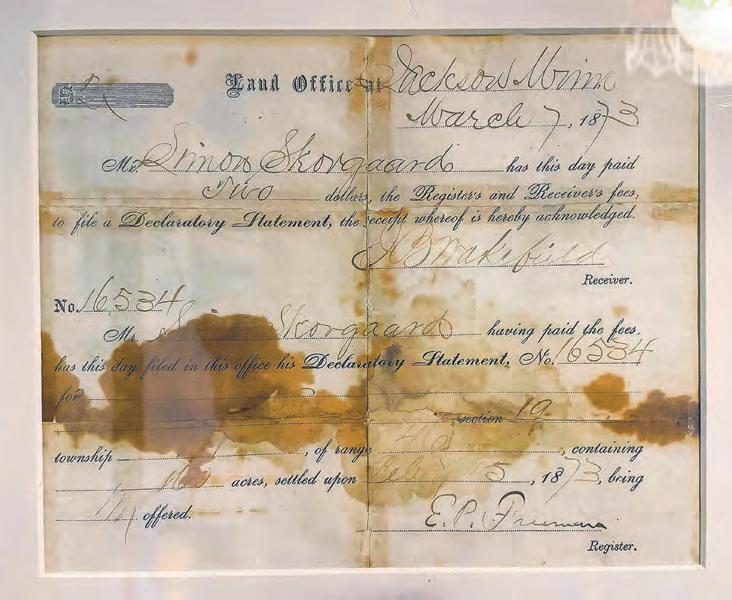
The recent generations
Among Nels and Clara’s nine children was son, Sheldon, who grew up and made a name for himself in the agricultural industry. He was inducted into the Rock County Hall of Fame posthumously in 2022.

Sheldon, who was a Navy pilot in World War II, returned to rural Hills and farmed, while his wife, Elnora, was a nurse. In 1968, with five children, they signed up to become missionaries for a Lutheran mission in Africa. They took the kids with them.
“Norman Borlaug had
won the Nobel Peace Prize for producing wheat that doubled the production in Africa. The U.S. government said we can do this in other African countries,” Sandager shared. “Dad was recruited in Ethiopia and he and mom went to Tanzania and then Ghana.”
Sheldon Sandager helped the African countries to grow corn, while Dave Sperling — who had worked with Borlaug — developed the traits. The seed they developed in the late 1960s is still sold today in Ghana and Tanzania, Sandager said.
then returned to rural Hills. Since Sheldon was working with farmers and Elnora worked as a nurse, their five kids — ranging from a high school senior to a second SANDAGER From Page 16
Photo courtesy of Eugene Sandager Members of the Skovgaard family are shown here in 1887.
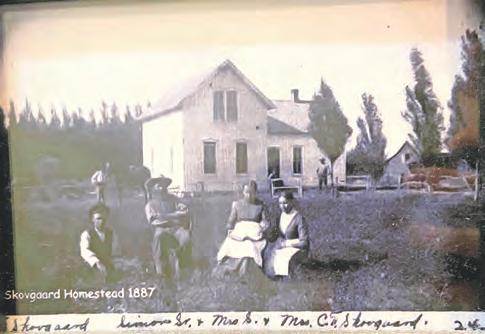
For all your local and long distance livestock hauling



Julie Buntjer/The Globe Eugene “Pucky” Sandager points to the family farm as printed on an old township plat and notes its proximity to Hills and the former town of Bruce, Minnesota. The framed plat hangs in the former Bruce Depot, which Sandager acquired and filled with relics of agricultural history.
grader — stayed in a boarding school. They saw their dad during the summer and on Christmas vacation.
TODAY’S FARM WEDNESDAY, MAY 31, 2023 | 17 TRUST US TO PROT EC T FARMERS Thankstoallthefarmersoutthere. We'reproudtohelpprotectyourhard work. TrustinTomorrow.® "TrustinTomorrow."and"GrinnellMutual"areregisteredtrademarksofGrinnellMutualReinsuranceCompany.©GrinnellMutualReinsuranceCompany,2022. 212S.Kniss,Luverne (507)283-3704or(877)631-3704 Pipestone(888)825-3366 kozlowski-insurance.com TRUST US TO PROVIDE RELIABLE SERAVICE We’ve been protecting our customers since 1909. And we’ll still be here when you need us most. Trust in Tomorrow® Contact us today. Wilmont,MN 507-926-5333•1-800-658-2558 Forallyourlocalandlongdistancelivestockhauling Wilmont, MN 507-926-5333 • 1-800-658-2558
The family stayed in Africa for two years and
Julie Buntjer/The Globe The land office at Jackson, Minnesota, recorded the payment of $2 for the 160acre parcel of land on Feb. 15, 1873.
SANDAGER : Page 19
The sisters learned a lot from their Grandma Tillie — including some swear words, Sarah said with a grin.
“She only swore when she was chasing hogs,” Joyce added. “Swear words were not a part of Tillie that anyone (else) knew.”
Laura and Sarah helped their grandma a lot in the garden, picking sweet corn and preparing it for the freezer being one such memory.
“She couldn’t sit still to save her life,” Sarah said. “We’d try to get her to sit down and watch a movie and she’d sit for 15 minutes and be off doing something else.”
Tillie joined the girls for games of croquet in the yard and bonded with the menagerie of farm cats. Sarah said she even helped her grandma bottle-feed baby pigs one year in the basement of the now century-old home.
“We saw a lot of things shown as a really good example for us,” Sarah said. “(Grandma and Grandpa) were very involved on the farm and through the church. We saw how they volunteered through the church.”
And when Tillie was in need on the farm — once when the windstorm came through, and again when

lightning struck the barn and it caught fire — it was volunteers who came to her aid.
“When the barn burned down, there was one cow and calf in the back end of the barn and (Mom) got them out,” recalled Randy of the late April 1999 fire.
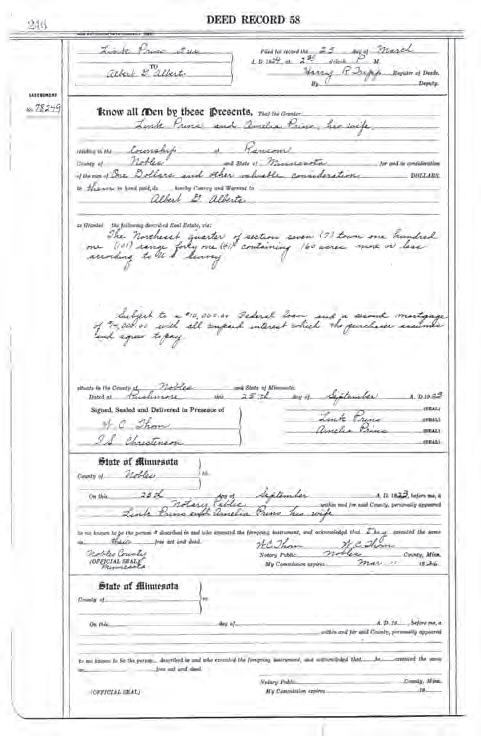
“When the fire trucks got there, she was chasing the cow out of the barn,” added Janet.

“The fire department pretty much kept the buildings next to it from catching fire,” Joyce said.
After the blaze, all that remained were the charred block walls.
The barn was replaced with a smaller structure without hay storage — a place for the cattle and calves and show pigs to have shelter.

Other buildings on the farm remain in good shape, with the exception of the nearly century-old chicken barn, which Randy plans to take down this year.

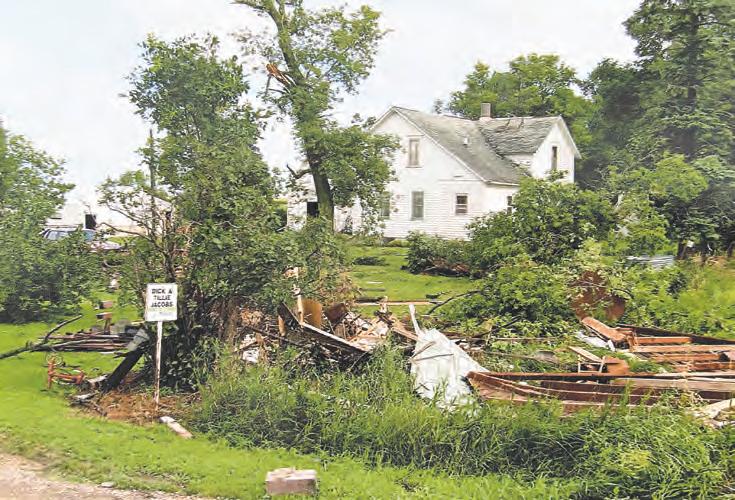
As for the future of this

century-old family farm, the Jacobs intend for it to remain in the family. It was put in a life estate in 1999.
“I’d like to get back out here, but we’ll see what the future holds,” said Sarah.
18 | WEDNESDAY, MAY 31, 2023 TODAY’S FARM
An isolated downburst struck the Jacobs farm in 2010, leaving the home intact with Tillie Jacobs hunkered down in the basement.
JACOBS From Page 7
Photos courtesy Sarah Jacobs Shown is the deed for the Alberts-Jacobs farm in Ransom Township, Nobles County.
Garrett Opdahl, owner Cell: 507-227-3703 email: Opdahldrainage@gmail.com JessDonkersloot Highway59•Slayton,MN56172 507-370-1912 Plumbing~Heating~Cooling 507-967-2464 308 S. Broadway Street, Ellsworth, MN 56129 ORV & SONS, INC.
An April 1999 lightning strike sparked a fire in the barn on the Jacobs farm. The barn was a total loss, but Tillie was able to save a cow and calf from the blaze.
Sandager, who earned his ag business degree from Southwest State University, said his time in Africa changed his life because of the starvation and corruption he witnessed. He fears the same may happen in the United States as a result of border crossings and the inability for agricultural production to keep up.
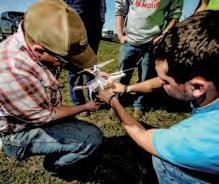
He’s also a bit pessimistic about the future of his family’s 150-year-old farm. Sandager is now retired and rents his farmland to a nephew, Lucas Sandager.
He worries about how fair competition turned into price fixing, which turned into no competition in the livestock industry.




“You’ve got three packers and they’re setting prices every day,” Sandager said. “You don’t have that capitalistic environment to work hard and smart and get ahead.”



The idea of corporate
farms concerns him, but Sandager said if a young individual “works their butt off and works smart” they can survive.

“I didn’t use the word ‘thrive,’” he said. “The ones that are thriving are making it somewhere else and doing it for their ego. It’s about ego — who’s the biggest, who’s got the most cattle; who farms the most acres. It’s not about lifestyle; it’s not about who’s taking the best care of the soil and leaving it for the future.”
Yet, Sandager said he

believes there’s a God and he believes miracles can happen.

He and his wife, Shirley, raised three daughters in rural Hills. The oldest, Tarah, lives in Buffalo, and the youngest, Kelly, is currently in Montana. Brittany is living on the original Skovgaard-Sandager farm with her family.
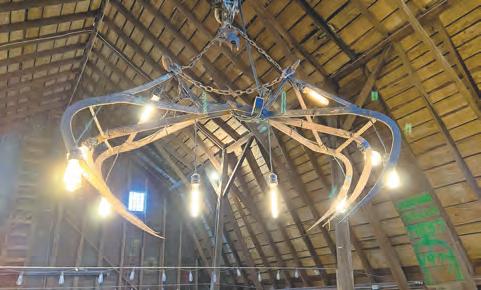
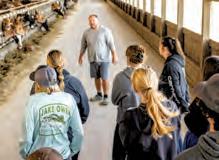
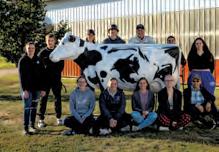

“I don’t know if they’ll ever farm, but it’s in very good hands now,” Sandager said. “Perseverance — we have that going for us.”

TODAY’S FARM WEDNESDAY, MAY 31, 2023 | 19 A Subsidiary of Patten, LLC 605-254-5913 OR 507-853-4742 | 40 YEARS SERVICING IOWA, MINNESOTA & SOUTH DAKOTA williamsonsupply.shop 109 S. MINNESOTA AVE., OKABENA, MN 56161 (LOCATED RIGHT NEXT TO THE BANK) Shop Tools & A Whole Lot More! Best Pricing and Service in the area! Call to get answers to your welding questions. WELDERS & AIR COMPRESSORS OFFICEOFADMISSION 1501 STAT ES T.,M ARSHALL ,MN56258 800.642.0684 • WW W. SMSU.E DU READYTOL EARNMORE? ScantheQR code &create your own CustomViewbook! NEW!MINORIN ANIMALSCIENCE! Contact Kristin Kovar, AssociateProfessorof Agricultural Educationat kristin.kovar@SMSU.eduwithanyquestionsorto requestinformation. Learnmoreatwww.SMSU.edu/go/ag FARMTOFORK DEPARTMENTOF AG RICU LT URE, CULINOLOGY ® &H OSPITALIT YM AN AG EMENT Agricultural Education,BS Agricultural Solutions,BS Agronomy, BS AgribusinessMgmt.,BS/AS Agriculture,BAS AgComm. &Leadership,BS Culinology®,BS HospitalityMgmt.,BS Learnaboutall of ourag-relatedprograms: SOUTHWESTMINNESO TA ST AT EU NIVERS ITY
From Page 17
SANDAGER
Julie Buntjer/The Globe Lights dangle from a hay fork in the haymow of the Sandager barn, which is currently used as a party space for the family.


20 | WEDNESDAY, MAY 31, 2023 TODAY’S FARM ContactSue Lovell formoreinformation 507-847-7929 |sue.lovell@mnwest.edu SCAN TO LEARNMORE! AmemberofMinnesotaState.AnAffirmative Action EqualOpportunityEducator/Employer. www.mnwest.edu |800-658-2330 1. FinancialStatements 2. CashFlowPlanning 3. Accounting&RecordKeeping 4. TaxPlanning FARMBUSINESS MANAGEMENT LEARNHOWTOMAKEPROFITABLE BUSINESSMANAGEMENT STRATEGIES INDIVIDUAL STRUCTURE TO SUPPORTYOUR FARM
 BY JULIE BUNTJER
BY JULIE BUNTJER
 Julie Buntjer/The Globe Shirley and Eugene “Pucky” Sandager stand in front of a covered wagon that is reminiscent of the wagon his ancestors used to travel from Cedar Falls, Iowa, to the unbroken prairie in southern Rock County near what is now the town of Hills.
Photo courtesy of Eugene Sandager Simon Skovgaard
Julie Buntjer/The Globe Shirley and Eugene “Pucky” Sandager stand in front of a covered wagon that is reminiscent of the wagon his ancestors used to travel from Cedar Falls, Iowa, to the unbroken prairie in southern Rock County near what is now the town of Hills.
Photo courtesy of Eugene Sandager Simon Skovgaard












 BY KARI LUCIN
BY KARI LUCIN































 BY SCOTT MANSCH
BY SCOTT MANSCH
























 BY SCOTT MANSCH
BY SCOTT MANSCH























































